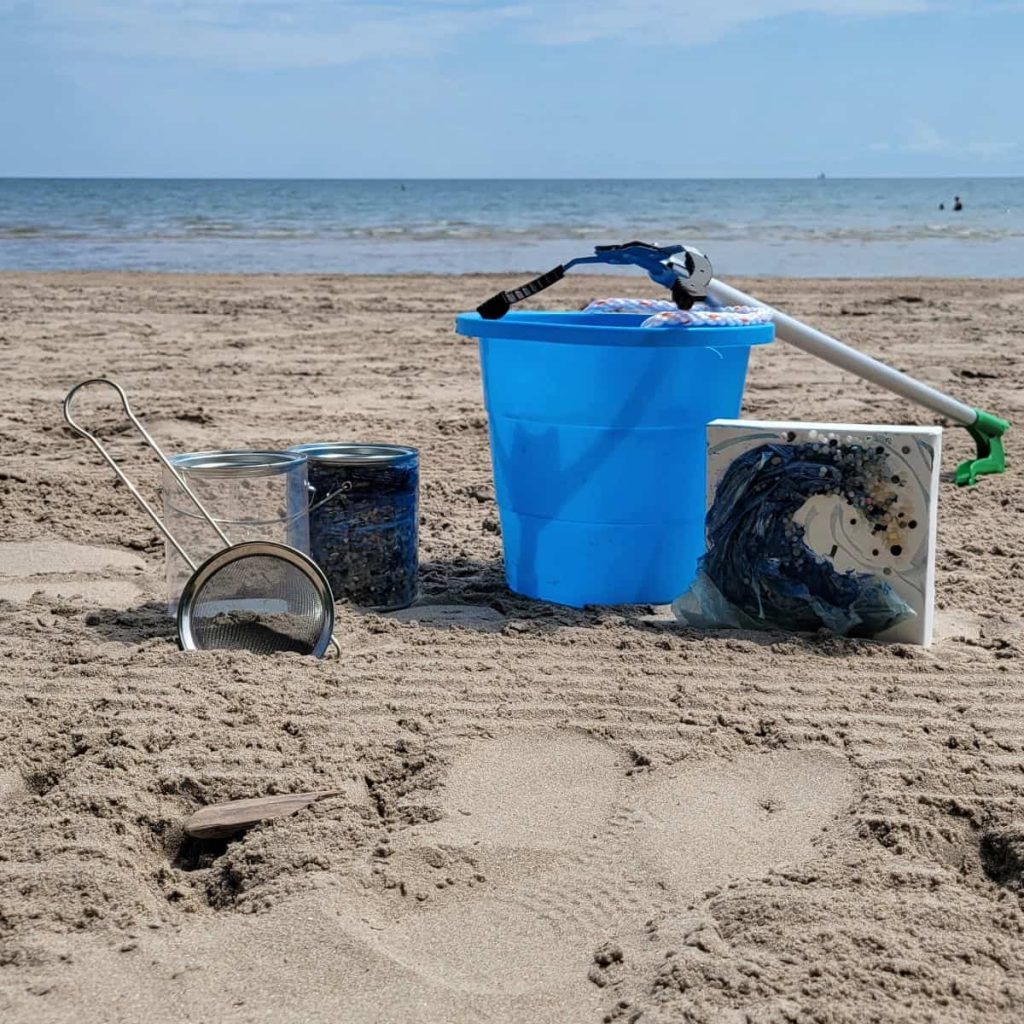Nurdles are small pellets that are the first step in the process of making anything plastic. Plastic containers, bags, and bottles were all once nurdles. Every nurdle is created to be melted down and turned into a product used by humans. Nurdles are classified as microplastic (less than 5mm) and are lentil sized. Fossil fuels are required in the creation of nurdles, which is the main emitter of greenhouse gases. Nurdles are made of polyethylene, polypropylene, polystyrene, polyvinyl chloride, or other plastic types.
Where do they come from?
Accidental spills can happen wherever nurdles are handled or transported from production to shipping containers for transportation. When spilled and not cleaned up, nurdles can find their way into our storm drains and are carried straight out into our waterways.
Why are they bad?
Plastics are a chemical cocktail. They contain contaminants from the fossil fuels or recycled products used to make plastic (non-intentionally added substances like heavy metals) as well as additives that are used to make plastics colourful, flexible, and usable (additives such as dyes, phthalates, and plasticizers). With time, they break down in the Sun’s UV rays and create smaller and smaller pieces, making them nearly impossible to remove.
How do they harm our ecosystems?

Due to their size, and often clear colour, nurdles can look like fish eggs which makes them particularly attractive marine wildlife. Fish, turtles, seabirds, and all kinds of marine animals are eating these pellets. Their stomachs fill with plastic, which their bodies can’t handle. The toxins in the microplastics being eaten are slowly poisoning these animals. Then either two things happen:
1) The fish dies and it’s eaten by another fish, who then starts to get poisoned too
or
2) You eat the fish for dinner yourself. We end up eating the fish whose flesh not only has tiny plastic particles but also harmful chemicals.
Where are they found?
- All over the world – from the middle of the pacific to the arctic circle.
How many are there?
- Over 360 million tonnes of plastic was produced in 2021, weighing more than the total weight of the human population.
- Across the UK it is estimated that as many as 53 billion pellets could enter our oceans every year
- Global estimates are close to 230,000 tonnes of nurdles polluting our oceans every year.
- In 2022, over one million nurdles were collected and reported with the Great Nurdle Hunt.
What can we do?
- Prevention: Companies making, transporting and using pellets need to handle pellets with care.
- Shift away from single-use plastics and into a more sustainable lifestyle.
- Create awareness by sharing information on social media with friends and family.
- Do a nurdle hunt! By collecting nurdles this provides data to help track pollution. By sharing your findings, this can bring awareness to the government to work on a solution.
Learn more about nurdles here and sign up to receive BurlingtonGreen’s monthly e-newsletter so you can learn when our next nurdle hunt at the Burlington beach will be taking place.

